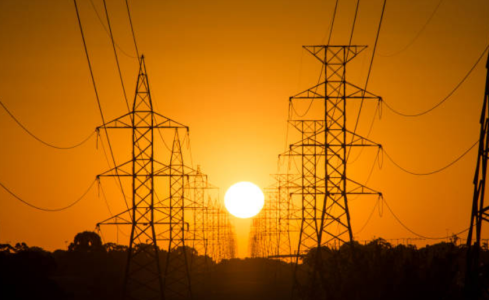Energy providers use deceptive tactics to raise household bills
By
Gian T
- Replies 0
If you’ve ever felt like your electricity bill is creeping up for no good reason, you’re not alone—and it turns out, there may be more to it than just rising energy prices.
Recent findings have revealed that some energy providers are using a sneaky trick that could be costing the average Aussie household an extra $171 a year.
For many of us, that’s money better spent on a nice dinner out, a weekend away, or simply keeping up with the cost of living.
According to consumer advocacy group Choice, energy companies have been caught using identical names for different electricity plans—some more expensive than others.
This means you could be on a plan called 'Saver Plus' and see an offer to switch to another 'Saver Plus' plan, not realising that the new one is cheaper.
It’s a confusing tactic that’s left many Australians paying more than they need to simply because the names are the same.
Ashley de Silva, CEO of Choice, summed it up: 'It shouldn’t be this hard to know if you’re being ripped off on your energy bill.'
And we couldn’t agree more! Choice’s research estimates that this practice could cost Australians $65 million in lost savings every year.
You might be wondering how this is even allowed. The issue comes down to how energy retailers market their plans.
By reusing the same plan names for offers with different prices or conditions, they make it difficult for customers to compare and switch to the best deal.
Many people assume that if the name is the same, the plan must be the same, too—but that’s not always the case.
Choice collected nearly 400 energy bills from January to March 2024 and found 64 examples where plans with identical names had different prices.
In these cases, customers could have saved an average of $171 a year by switching to the cheaper version of the same-named plan.
In some cases, the savings could have been as high as $588 a year!
The Australian Energy Regulator (AER) recognised the confusion and, in September 2023, introduced new rules to help consumers.
Now, energy companies must include a 'better offer' statement on the first page of your bill, telling you if there’s a cheaper plan available and how much you could save by switching.
Look out for a section on your bill titled 'Could you save money on another plan?' If you see this, it’s worth looking closer—even if the plan name looks familiar.
It could be the key to unlocking significant savings.
This issue comes at a time when energy prices are already on the rise.
The AER’s latest draft determination suggests that households in NSW, South Australia, and South East Queensland could see their power bills increase by between 2.5 per cent and 8.9 per cent this year, depending on where you live.
Small businesses aren’t immune either, with potential rises of up to 8.2 per cent.
With the cost of living going up across the board, every dollar counts.
That’s why it’s more important than ever to make sure you’re not paying more than you need to for your electricity.
To protect yourself, start by checking your energy bill carefully. Look beyond the total and find the 'better offer' statement—plans with the same name can still have different details.
If you notice a cheaper option, contact your provider and ask them to explain the difference or request a switch.
Take time to shop around using independent comparison sites like Energy Made Easy or Victorian Energy Compare to explore other deals.
If things seem confusing, reach out to organisations like Choice or your local Seniors Rights Service for support.
Many older Australians are on fixed incomes and can’t afford to pay more than necessary for essential services like electricity.
With energy bills making up a significant portion of household expenses, being able to spot these tricks and switch to a better deal can make a real difference to your budget.
Energy companies should be making it easier—not harder—for Australians to get a fair deal. Until they do, it pays to stay vigilant, read the fine print, and don’t be afraid to ask questions.
After all, every dollar saved is a dollar you can spend on the things that matter most to you.
In other news, many households pay more for electricity after staying on the same plan for over a year. This ‘loyalty penalty’ leaves people on older plans facing much higher prices.
Switching energy providers stays simple and often takes just a phone call. You can read more about it here.

Have you noticed confusing plan names on your energy bill? Have you managed to save money by switching plans, or do you have tips for fellow members on how to get the best deal? Share your experiences in the comments below.
Recent findings have revealed that some energy providers are using a sneaky trick that could be costing the average Aussie household an extra $171 a year.
For many of us, that’s money better spent on a nice dinner out, a weekend away, or simply keeping up with the cost of living.
According to consumer advocacy group Choice, energy companies have been caught using identical names for different electricity plans—some more expensive than others.
This means you could be on a plan called 'Saver Plus' and see an offer to switch to another 'Saver Plus' plan, not realising that the new one is cheaper.
It’s a confusing tactic that’s left many Australians paying more than they need to simply because the names are the same.
Ashley de Silva, CEO of Choice, summed it up: 'It shouldn’t be this hard to know if you’re being ripped off on your energy bill.'
And we couldn’t agree more! Choice’s research estimates that this practice could cost Australians $65 million in lost savings every year.
You might be wondering how this is even allowed. The issue comes down to how energy retailers market their plans.
By reusing the same plan names for offers with different prices or conditions, they make it difficult for customers to compare and switch to the best deal.
Many people assume that if the name is the same, the plan must be the same, too—but that’s not always the case.
Choice collected nearly 400 energy bills from January to March 2024 and found 64 examples where plans with identical names had different prices.
In these cases, customers could have saved an average of $171 a year by switching to the cheaper version of the same-named plan.
In some cases, the savings could have been as high as $588 a year!
The Australian Energy Regulator (AER) recognised the confusion and, in September 2023, introduced new rules to help consumers.
Look out for a section on your bill titled 'Could you save money on another plan?' If you see this, it’s worth looking closer—even if the plan name looks familiar.
It could be the key to unlocking significant savings.
This issue comes at a time when energy prices are already on the rise.
The AER’s latest draft determination suggests that households in NSW, South Australia, and South East Queensland could see their power bills increase by between 2.5 per cent and 8.9 per cent this year, depending on where you live.
Small businesses aren’t immune either, with potential rises of up to 8.2 per cent.
That’s why it’s more important than ever to make sure you’re not paying more than you need to for your electricity.
To protect yourself, start by checking your energy bill carefully. Look beyond the total and find the 'better offer' statement—plans with the same name can still have different details.
If you notice a cheaper option, contact your provider and ask them to explain the difference or request a switch.
Take time to shop around using independent comparison sites like Energy Made Easy or Victorian Energy Compare to explore other deals.
If things seem confusing, reach out to organisations like Choice or your local Seniors Rights Service for support.
With energy bills making up a significant portion of household expenses, being able to spot these tricks and switch to a better deal can make a real difference to your budget.
Energy companies should be making it easier—not harder—for Australians to get a fair deal. Until they do, it pays to stay vigilant, read the fine print, and don’t be afraid to ask questions.
After all, every dollar saved is a dollar you can spend on the things that matter most to you.
In other news, many households pay more for electricity after staying on the same plan for over a year. This ‘loyalty penalty’ leaves people on older plans facing much higher prices.
Switching energy providers stays simple and often takes just a phone call. You can read more about it here.
Key Takeaways
- Choice has accused Australian energy providers of using identical names for different electricity plans, leading to confusion and costing the average Aussie about $171 each year.
- Choice’s research found 64 energy plans with the same name but different prices, making it difficult for consumers to identify the best deal and potentially costing households up to $588 extra annually.
- The Australian Energy Regulator introduced rules in September 2023 requiring energy companies to include a ‘better offer’ statement on bills, but many consumers still believe they’re on the cheapest plan because of the plan name confusion.
- Despite new regulations, energy plan naming remains misleading and could become an even bigger issue as households face power bill increases of up to 8.9% under the latest draft determination from the Australian Energy Regulator.








